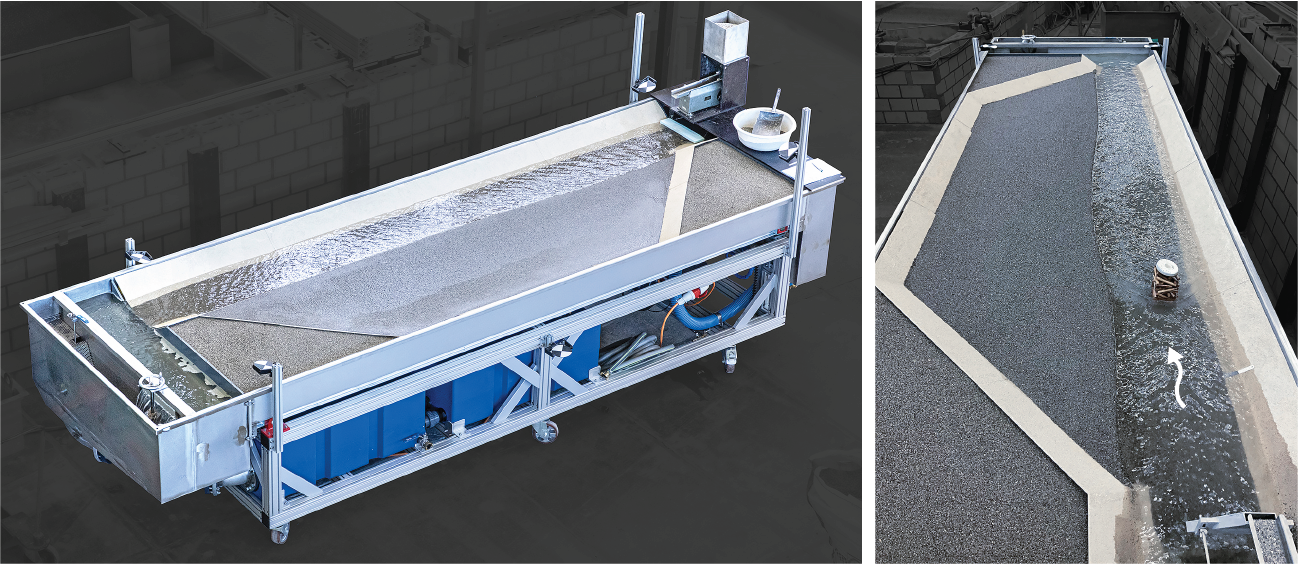Stream Table
A Tool for Visualising and Analysing Flow Processes
The stream table developed at the VAW and co-financed by the FOEN (Federal Office for the Environment) is an innovative tool for investigating and demonstrating hydromorphological processes in river systems. With dimensions of 1.5 x 4.8 metres and a modelling area spanning 4 metres, the table enables precise simulations of river morphodynamics while remaining transportable for flexible applications.


At the VAW, the stream table is employed in fundamental and applied research, offering insights into topics such as flow dynamics, sediment transport, and the effects of technical interventions for flood protection. Additionally, it serves as an educational tool, allowing students to observe and analyse flow processes, erosion mechanisms, and the impact of river engineering structures in real-time.
A key application of the stream table lies in the realistic visualisation of flood protection and river restoration measures. Complex fluvial processes that occur in natural systems can be effectively demonstrated and explained through the model, making them accessible to a broad audience. By bridging science and communication, the stream table fosters informed discussions with diverse stakeholders, including professionals, government authorities, landowners, and local residents.
The model’s portability allows it to be used in community settings, schools, or public events, raising awareness about hydraulic engineering and river restoration challenges. It is particularly valuable for promoting public understanding, encouraging participation in project planning, and fostering the acceptance of flood protection and revitalisation projetcs. Furthermore, it provides an engaging platform to inspire younger generations to explore the field of hydraulic engineering.


If you are interested in renting the stream table for a hydraulic engineering or river restoration project on your premises or in our laboratory hall, please contact Volker Weitbrecht. In addition to a high-voltage power connection, a floor with a payload capacity of up to 4.5 tons (depending on the amount of sediment in the model) is required for the operation of the model.